Fused Glass Art
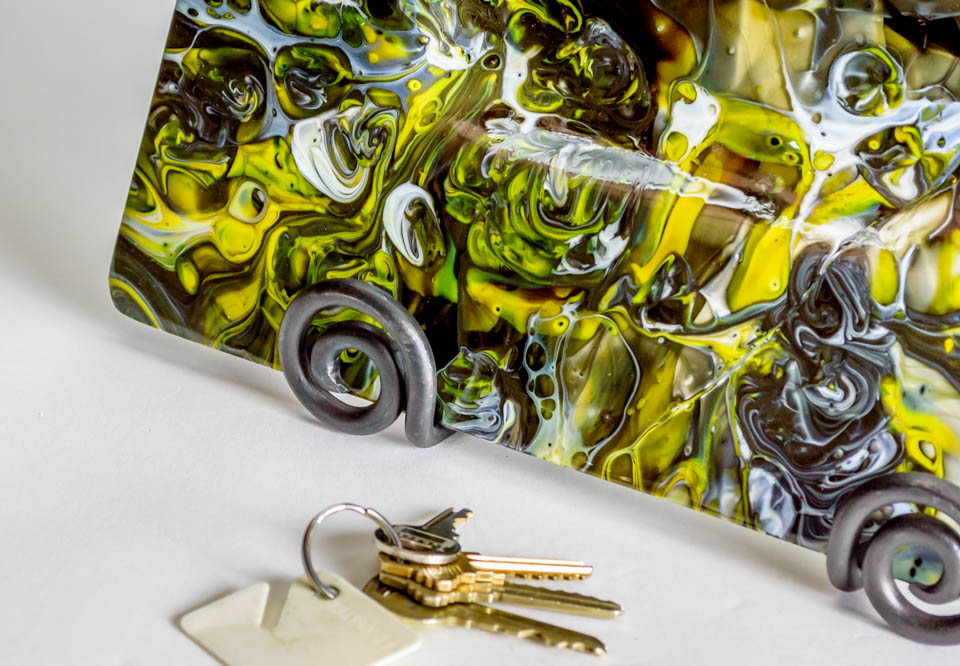
Fused Glass – Endless Possibilities
Cold, Warm or Hot ?
Like in other industries, art glass folks have their own terminology. You may hear an artist’s technique called “Cold”, “Warm” or “Hot”. These terms help divide the types of glasswork into understandable groupings.
Cold Glass is what most of us call Stained Glass. It’s “cold” in that stained glass artists do not typically use heat to melt the glass itself, though they may solder the lead came or copper foil that holds stained glass pieces together. See our Stained Glass page for more info on Cold Glass techniques. You can also see many of Karla’s Cold Glass projects in our Stained Glass Portfolio.
Hot Glass refers to blown glass. Hot glass artists actively work to shape the glass while it is at temperatures above 1000 °F. That’s HOT! Glass blowing requires the same or similar materials, but these artists have a completely different set of skills in the construction of their work. We admire the work of many hot glass artists, but we at Renegade Art Glass don’t do glass blowing. (Learn more: See the Wikipedia article “Glassblowing”.)
Warm Glass techniques are also called “kiln forming,” that is, using the high temperatures in a kiln to shape the glass. It’s “warm” in that the artist heats the glass, but does not typically have to interact with the glass while it is hot. The two main types of kiln forming are casting and fusing.
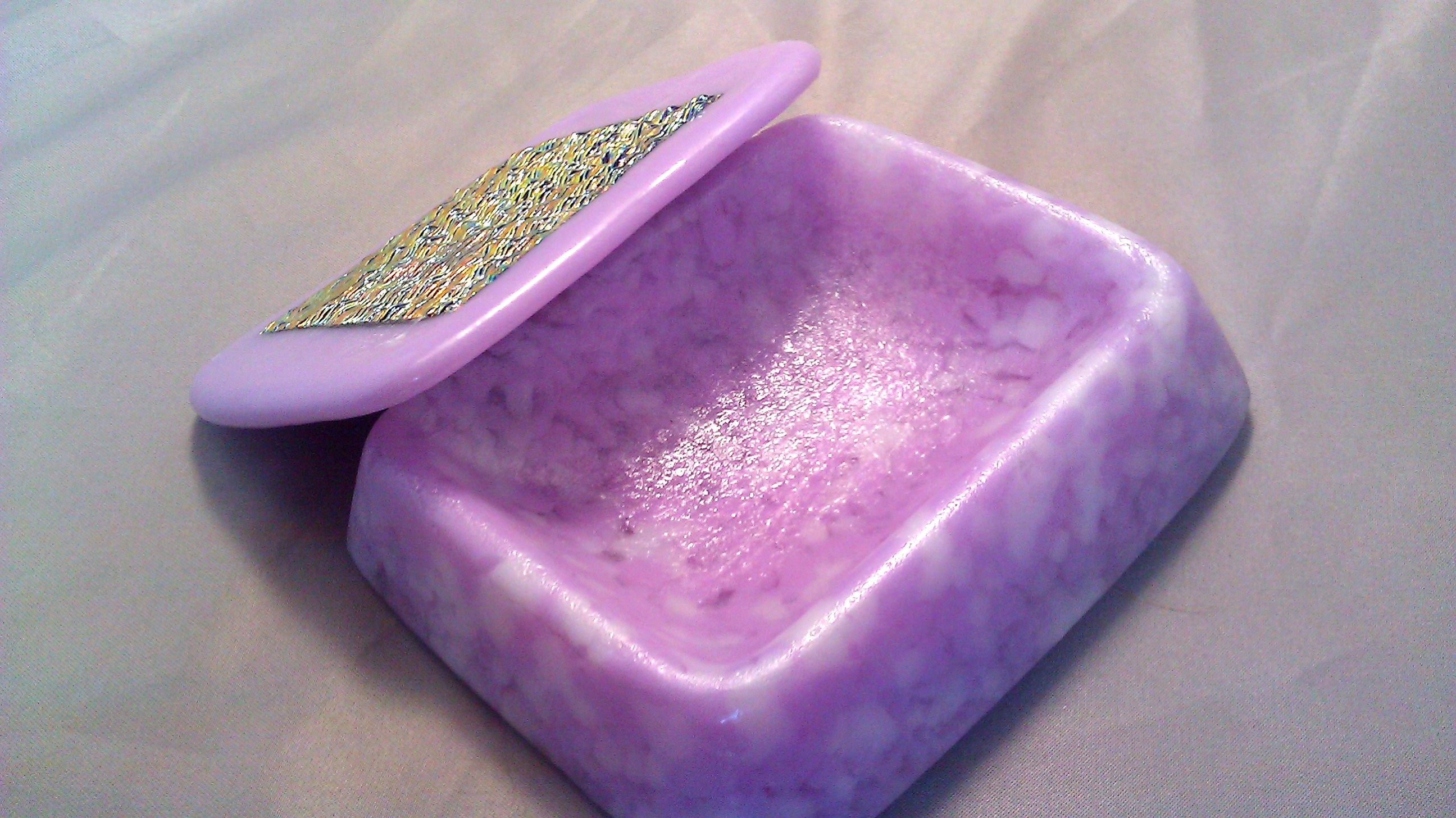
Cast Glass
A cast object is produced when glass is melted into a liquid that then fills a mold. Once cooled, the piece will have taken the shape of the mold. Glass casting is typically done using billets (blocks of glass) or frit (ground glass). The glass is either put directly into the mold before heating, or placed in a special chamber above the mold so that it will run into it when liquefied. Cast objects can take on many shapes not possible with fused glass, as the artist is not simply using sheet glass.
Fused glass, as the name implies, does not normally require heating the glass all the way to the liquid state. In a basic fusing process, the object will start as multiple pieces of glass heated enough that they bond together. This is typically done on a flat surface in the kiln, producing a fused “blank”. This blank may then be put back into the kiln on top of a mold and heated just enough for the material to sag into the shape of the mold. This process is called slumping or draping.
One of the tricky elements in this art form is that successful fusing requires only using glass pieces that have matching coefficients of expansion (COE). COE is a measure of how much the material expands or contracts in a given change in temperature. When two pieces of glass with different COEs are fused together and then cooled, the differing shrinkage rates develop very large thermal stresses in the glass. These stresses ultimately lead to cracking and breakage. Therefore, fused glass artists take pains to ensure that all the glass they use has compatible COEs.
Normal glass, whether window glass, wine bottles or stained glass, has widely varying COE. Even just changing the color of a glass can change it’s COE. However, several companies specialize in making “fusible” glass with tightly controlled COEs to help individual artists avoid this issue. (Learn more: Two of the biggest manufacturers of fusible glass in the U.S. are Bullseye and Spectrum.)
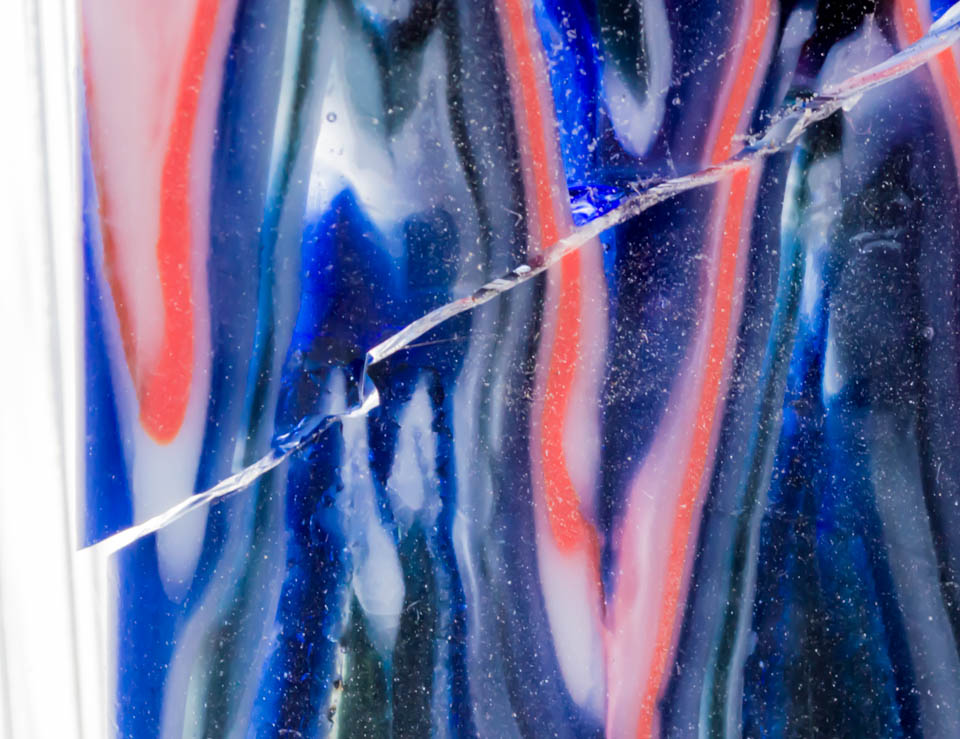
Thermal Shock
Another big challenge in kiln formed glass is controlling the temperature of the glass. As many of us are aware, cooling hot glass too fast can cause it to shatter. This is also true if glass is heated too fast. This is called “thermal shock”. It is caused by the stresses that develop when one part of the object is hotter than another part. Moreover, even if a glass object does not shatter or crack with excessive heating or cooling, these stresses can remain and cause it to crack later. Because of this challenge, most modern glass kilns use a digital controller so that the temperatures and rates of change can be precisely controlled.
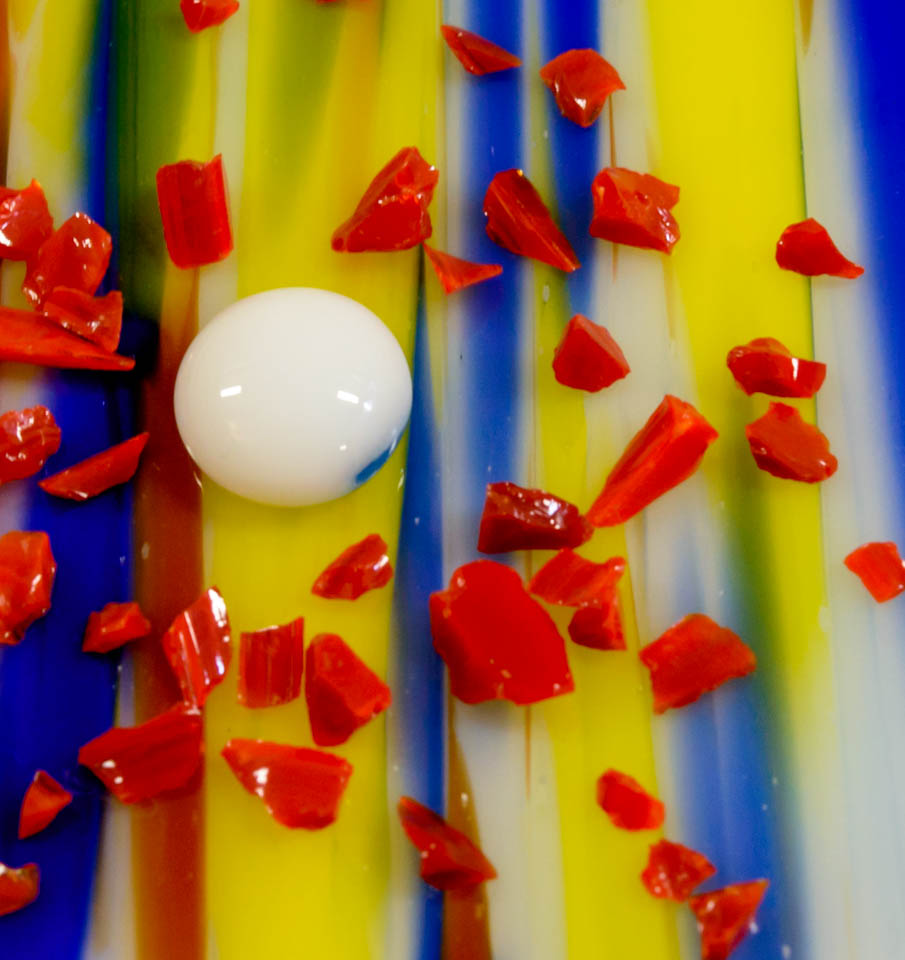
Fused Glass Art: Before Fusing
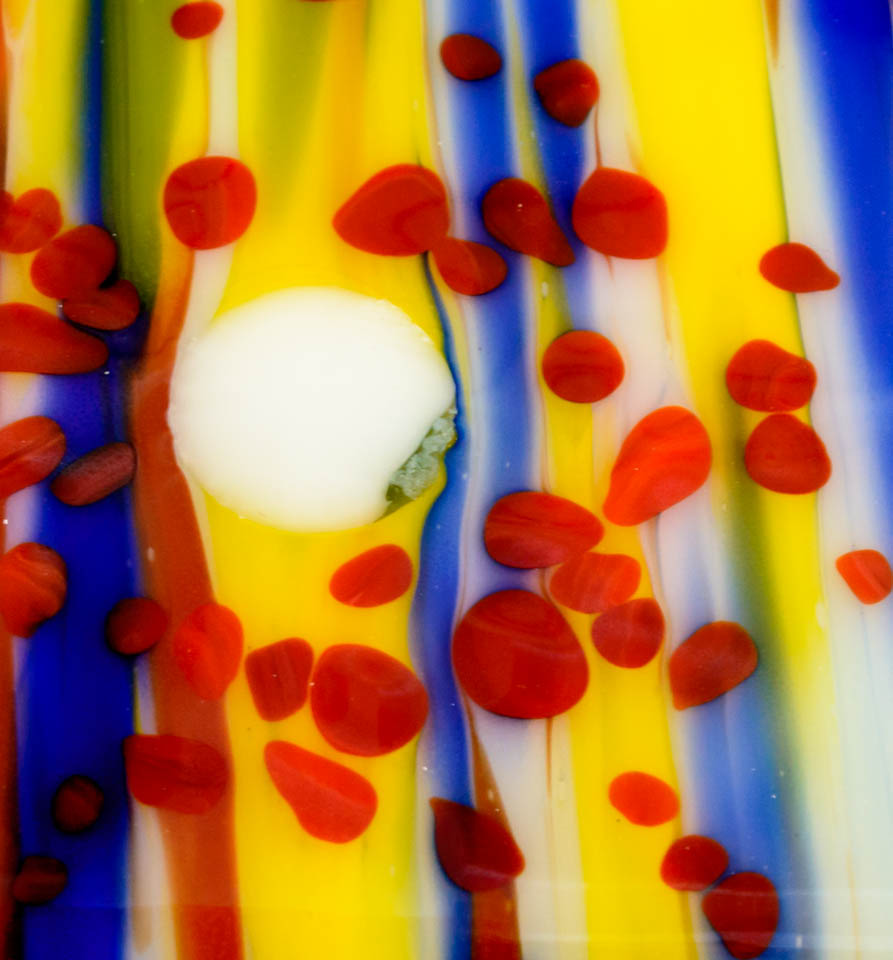
After Fusing
For many projects, the fused blank does not come out exactly the size or shape that we want. When this happens, the piece will be “cold worked” which can include cutting it to shape, and grinding or polishing the edges. There are variety of tools we use to cold work our pieces – diamond saws, belt sanders and lapidary grinders to name a few. All of these tools use water to lubricate the cutting and keep the blades cool.

Fused Blank on the Mold and Candle Bridge After Slumping
Once the fused blank has been cold worked, it is ready to be slumped. For slumping, we want the glass to soften but not melt. This requires another full kiln cycle, but with a lower ultimate temperature of around 1175 °F.
There are, of course, as many variations to these processes as there are types and colors of glass. That’s why we love fused glass, the art is in the process as well as the composition and the idea. (Learn more: See the Wikipedia article “Fused Glass”.)
Please browse the portfolio of Karla’s fused glass pieces, and don’t hesitate to contact us with a question. We’d love to hear from you.
